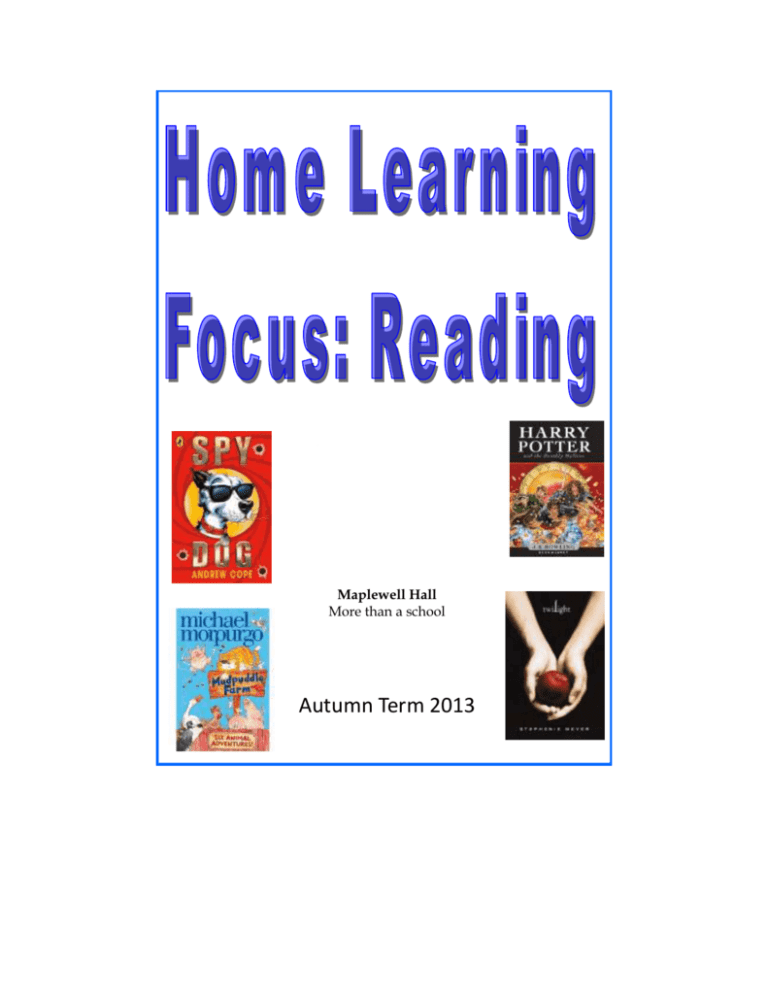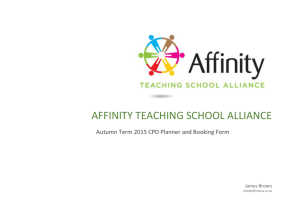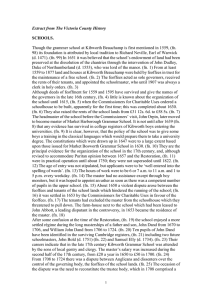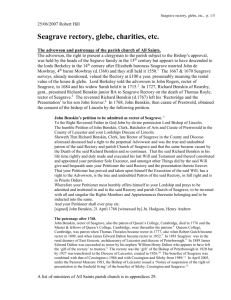Home Learning - Maplewell Hall School
advertisement

Maplewell Hall More than a school Autumn Term 2013 Maplewell Hall School More than a school f l mm nnnk rrrwr sssse vve zzzss shtici th ff ll mmb n cce e ph le ngnk bbb ckckc ddd ggg h wwh x y chtch a h jgged ppp qu ge eea i o u ttt ayaeai eeye ighi- owo- oou- oo ar oroor airar irure ouo ae eieiy eoao euee orea e r w (look) w wau oyoi ire ear ure Above are the most common formations of the 44 main sounds of the English language. Students learn to read by practising and blending these sounds. Why not try this at home? Stick with letter sounds rather than letter names for developing readers. Supporting Reading at Home—Top Tips Read yourself! Show a good example by talking about the reading you do at work and at home. Let your child know that reading is an important part of your life. Make reading time a special time together. Find a quiet place with the TV turned off. Keep books safe. Make your child their own special place to keep their books in their bedroom. Visit your library – it’s free to join! As well as taking out story books, use visits to the library as a time to find books and CD ROMs about your child’s hobbies and interests. Make time to read. Set aside a time for reading for the family – after school or before bedtime. Encourage independent reading but don’t be afraid to still read to your child. Modelled fluent reading is important. Don’t just read books. Encourage your child to read newspapers, TV guides, comics and magazines. Ask your child to find out information from the Yellow Pages, the Internet, cookery books, etc. Let your child read with younger children. Encourage them to read to other members of the family. Keep in touch with school. Make sure your child swaps their home reading books regularly at school and try to make a regular time slot to hear them read. If English is not your family’s first language: You can buy dual language books. You can talk about books and stories in any language. Anything else I can do? Point out signs and familiar words when out with your child, emphasising the importance of learning to recognise words such as Danger, Do Not Enter as well as the ones they wish to know such as McDonalds. and KFC! Help your child to recognise and to write their own address so that they can register on websites or order an item for purchase. Play games such as I Spy or others where your child is encouraged to listen carefully to initial sounds. Home Learning Thank you for taking the time to read this leaflet. In doing so you are taking the first steps in supporting your child’s progress in reading. This term our home learning focus is reading. The role of parents: Read with your child daily. Support your child in completing some of the home learning activities included in this pack. Complete some of the additional home learning activities on the school website: www.maplewell.leics.sch.uk (If you cannot access the website your child’s tutor will download the activities for you) Using the Daily Reading Record In addition to the charts for recording daily reading the records have many other activities for students to complete. On the pages numbered with odd numbers are many activities such as book reviews, comprehension questions, synopsis activities and much more. These make an excellent weekly homework activity. If your child completes the activities and shows them to their tutor they will be rewarded with a certificate. Online Activities As a school we have bought some excellent online resources to support students’ reading. Try Springboard Stories. The web address is: www.springboardstories.co.uk Username—admin@maplewell.leics.sch.uk, Password—Mag1cW1shes ‘Curriculum Visions’ is an absolutely fantastic resource. Find it at www.curriculumvisions.com Login details are: Username: maplewell.hall Password: LE128DW Use the links on the left of the screen to navigate the site. There are e-books and lots of skills activities. We have also uploaded some excellent reading homework activities to the school website: www.maplewell.leics.sch.uk. Autumn Term 2013 Reading Projects In addition to daily reading and completing some of the tasks in the reading record your child may like to complete one or more of the following reading projects. Project 1—Reading Fiction Read a book of your choice. Push yourself by choosing a book which is challenging for you. When you have finished reading your book, write a book review including the following information: Title: Author: Describe the setting: Describe the characters: The best part of the book: Would you recommend it to a friend? For less able students they may draw some pictures of the setting and characters. Project 2—Being Inspired by Fiction Why not write a story starring the main character from your favourite book? Project 3—Reading Non-Fiction Choose a topic you are interested in. It could be anything from ‘Space Exploration’ to ‘Kangaroos.’ Use the school library or your local library to find out about your topic. You may also use the internet. You may wish to produce a full length project or perhaps an information leaflet using the information you have gathered. Project 4— Fiction inspired writing. Choose a character from a favourite book. Write a diary entry from the point of view of the character explaining what you have been doing and how you feel. Project 5—Stories to play scripts Choose a chapter from a book. Re-write the action in the form of a play script showing what each character says. Projects 1-5 increase in difficulty. You should choose the activities most suited to your child’s ability. Your child’s tutor will provide guidance if you are unsure. Please keep in close contact. Any of the projects may be completed as a speaking and listening activity. Projects may be recorded (video/audio) and sent into school via email/memory stick.










